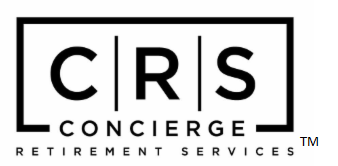 TO: All Clients and Professional Friends
TO: All Clients and Professional Friends
FROM: CRS Retirement Plan Consultant Team
DATE: October 2025
SUBJECT: Important Reminders for Plan Sponsors & Plan Participants
Beneficiary Forms
Life changes and at times the last thing that is focused on is changing your beneficiary form. Your beneficiary designation supersedes the instructions in your last will and testament so it is very important to make sure this is kept up-to-date. If your plan is on a full-scope recordkeeping platform like (VOYA, Ascensus, John Hancock, Empower, etc.), then participants should try to update their beneficiary form directly on the platform. If the recordkeeping platform does not allow for this, we can send you a blank beneficiary form to distribute to your participants (if you are unsure, please reach out to us). We strongly suggest you send out an annual reminder to all of your participants on the importance of keeping beneficiaries’ designations up to date.
ERISA Bond Coverage:
All plans that have at least one non-owner participant (not including spouses) must have a bond that protects the retirement plan against losses caused by fraud or dishonesty. The bond is a legal requirement for your plan to have in place and will help recover any losses if someone were to steal funds or commit fraud. The bond must be at 10% of all plan assets (up to a maximum of $500,000 (in some cases $1,000,000)). Furthermore, if you have non-qualified assets in the plan (e.g., mortgages, real estate, partnerships, etc.) the bond requirement could be up to 100% of the non-qualified asset. If you are uncertain how much your bond coverage should be, reach out to us. Most business insurance companies will be able to add this coverage to your policy. If not, we have a strategic relationship with Colonial Surety Company (https://quote.colonialsurety.com/erisa_quote). Please be sure to review your ERISA bond coverage and make sure it is at the correct limit.
Long Time/Part-Time Employees (LTPT):
The Government wanted to expand access to 401(k) and 403(b) plans to more employees and therefore passed this LTPT employee rule. LTPT employees are considered any employee who has worked at least 500 hours for two consecutive years. Therefore, even if your 401(k) or 403(b) plan excludes part-time employees (i.e. 1,000-hour-per-year requirement), these LTPT employees must be eligible to join the plan. They only are required to be eligible for the employee contribution portion of the plan, not the company contribution portion of the plan. It is important that you identify these LTPT employees each year and make sure you are offering them the ability to participate in the plan.
Knowing When Your Employees Are Eligible:
It is important that you track when your employees become eligible for the plan. Prior to the employees becoming eligible and entering the plan they should receive enrollment forms, Summary Plan Description and required participant notices. Failure to timely identify participants that are eligible can result in penalties and corrective contributions. If you are ever unsure of when someone is eligible, please reach out to us. That is what we are here for.
Timely Contributions:
Contributions and loan repayments should be made to the plan as soon as it can be reasonably segregated from the company’s account. For plans that have less than 100 participants you have up to seven business days from the payroll date to submit the contribution into the plan without it being considered late. For plans of 100 participants or more no such grace period is given. Therefore, for those plans, if you can show that you can contribute money to the plan in one business day then each payroll it should be done in one business day. Failure to timely remit these payments can result in penalties and corrective contributions.
Catch-Up Limit Changes:
There are two parts to this, one for 2025 and one for 2026:
- Starting in 2025 if you are age 60–63 by the end of 2025 you will be able to take advantage of an additional (enhanced) catch-up limit of 150% of your 2025 catch-up limit. 2025 catch-up is $7,500 so if you fall within this age range of 60-63 your catch-up limit is increased to $11,250. Please keep in mind the catch-up limit may change each year so please be sure to speak with us if you have any questions or need the updated limits.
- Starting 2026 if you are over age 50 you are eligible for catch-up contributions to your 401(k) and 403(b) plans. If you earn more than $145,000 in Gross W-2 wages in 2025 (this wage limit may change year by year based on cost-of-living adjustments), the extra catch-up contributions MUST be Roth contributions (made with after-tax dollars). If your plan does not allow for Roth contributions, you will NOT be able to make these catch-up contributions if your wages exceed the annual limit. Please note, any owners/partners/shareholders that do not receive W-2 wages, this change does not apply to you.
Payroll Update:
- It is important that if you are receiving updates of deferral changes and new loans that you are updating those deductions in your payroll system as soon as possible. Failure to timely update can result in penalties and corrective contributions.
- It is important that your payroll system aligns with the plan document. What do we mean? Most plan documents allow for deductions of 401k/403b deferrals on bonuses. You want to make sure your payroll makes the deduction on bonuses. It is important that when you have any off-cycle payroll or compensation other than base pay you make sure the payroll system is properly taking out the deduction. Failure to abide by the terms of the plan can result in penalties and corrective contributions.
